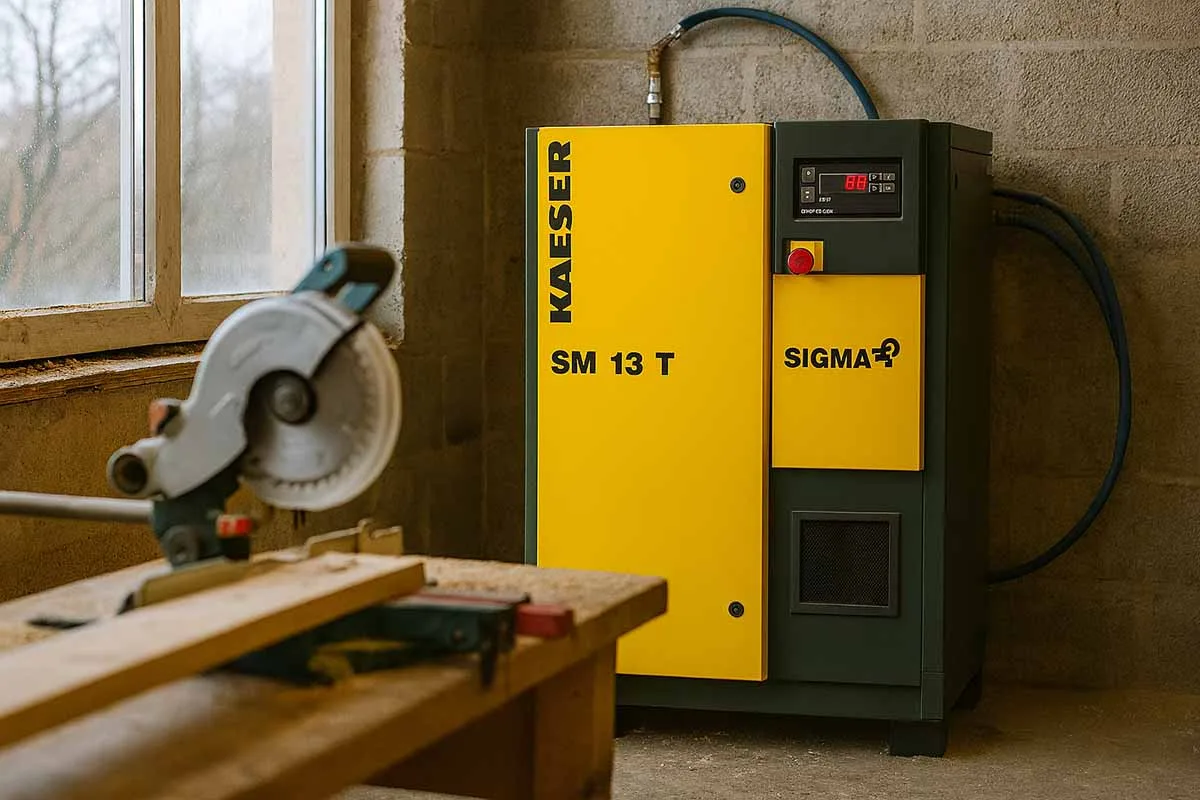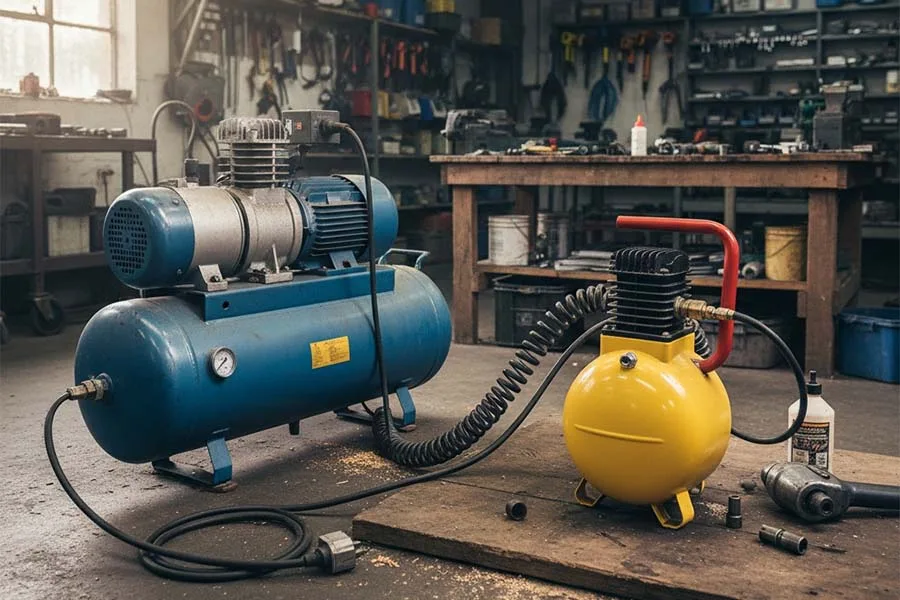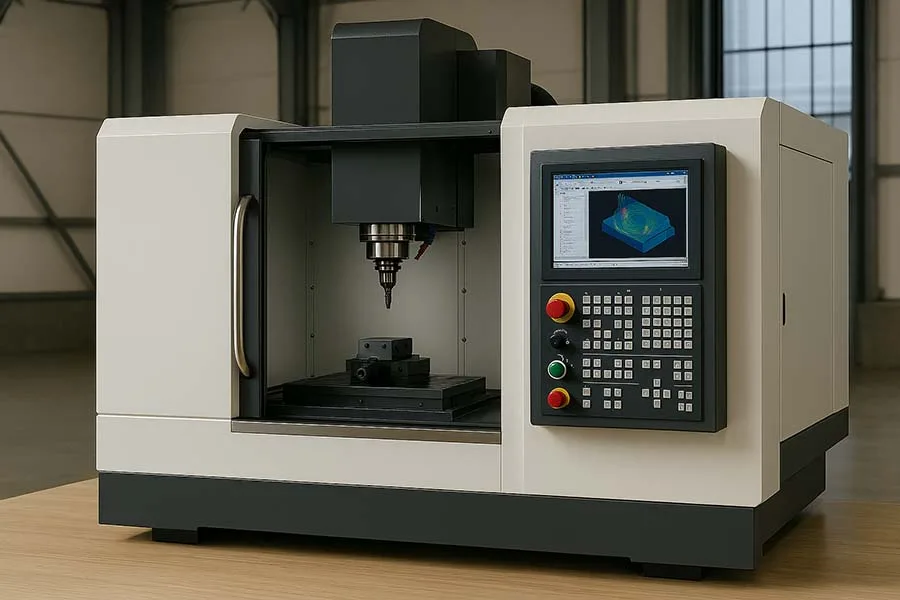Why Choosing the Right Compressor Matters
Compressed air is the invisible backbone of modern industry. From powering pneumatic tools to driving automation systems, the right compressor can make or break your workflow. But not all compressors are created equal—and choosing the wrong one can lead to inefficiencies, downtime, and costly maintenance.
Kaeser compressors are known for their German engineering, energy efficiency, and modular flexibility. Whether you’re outfitting a small workshop or scaling up to a multi-shift production line, this guide will help you choose the right Kaeser system with confidence.
Key Factors to Consider Before Buying
1. Air Demand (Flow Rate)
Measured in m³/min or CFM, this determines how much compressed air your tools or systems require. Oversizing wastes energy; undersizing causes pressure drops.
2. Operating Pressure
Most industrial tools operate between 6–10 bar. Match your compressor’s pressure range to your application needs.
3. Duty Cycle
Will the compressor run intermittently or continuously? Rotary screw compressors like Kaeser’s are ideal for 100% duty cycles.
4. Environment
Indoor vs. outdoor use, ambient temperature, and ventilation all affect performance. Portable models like the M Series are built for rugged field use.
5. Energy Efficiency
Look for IE3/IE4/IE5 motors, SIGMA PROFILE rotors, and variable-speed drives (VSD) to reduce lifecycle costs.
6. Dryer Integration
Moisture in compressed air can damage tools and products. T models include integrated refrigeration dryers for clean, dry air.
7. Noise Level
Measured in dB(A). Quiet compressors like the SM Series (~61–64 dB) are ideal for workshops and indoor environments.
Features & Specifications to Understand
- SIGMA PROFILE Rotor: Kaeser’s proprietary design improves flow and reduces energy consumption by up to 13%.
- SIGMA CONTROL 2: Smart controller with diagnostics, maintenance alerts, and remote monitoring capabilities.
- Electronic Thermo Management (ETM): Regulates fluid temperature to prevent condensate and optimize efficiency.
- Modular Configurations: Choose between standard, T (dryer), SFC (variable speed), and T SFC (dryer + VSD).
- Cooling System: Multi-channel airflow for motor, cabinet, intake, and compressor cooling.
- Maintenance Access: Wide-opening panels and metal-free filter elements simplify service.
Common Mistakes to Avoid
- Ignoring Air Demand Variability: Not accounting for peak vs. average usage leads to poor performance.
- Overlooking Dryer Needs: Moisture damage is preventable—don’t skip the dryer if your tools require dry air.
- Buying on Price Alone: Lower upfront cost often means higher energy or maintenance expenses.
- Neglecting Noise Levels: Especially in workshops, loud compressors can disrupt productivity.
- Skipping Installation Planning: Ventilation, ducting, and electrical access must be considered early.
Recommended Top Picks
| Use Case | Recommended Model | Key Benefit |
|---|---|---|
| Small workshop | Kaeser SM 13 T | Quiet, compact, dryer included |
| Mobile construction | Kaeser M44 | Towable, anti-frost, rugged |
| Mid-sized factory | Kaeser CSD 125 SFC | VSD, high output, smart control |
| Automotive assembly | Kaeser CSDX 165 T SFC | Full integration, 24/7 uptime |
| Budget-conscious startup | Kaeser SM 10 | Entry-level, efficient footprint |
Kaeser Compressor Buying Guide FAQ
Interesting Fact
Kaeser compressors can recover up to 96% of their heat output for use in facility heating or water preheating.
Lesser-Known Fact
Kaeser’s vibration isolators eliminate the need for special foundations in most rotary screw models.
Further Read
- Kaeser CSD Series Review: High-Efficiency Rotary Screw Compressors
- Kaeser M Series Review: Portable Rotary Screw Compressors for Mobile Power and Precision
- Kaeser Kompressoren SM Series Review
- Kaeser Compressor Maintenance Guide – Service Schedule & Expert Tips
Conclusion: Buy Smart, Build Strong
Choosing the right Kaeser compressor isn’t just about specs—it’s about matching your workflow, environment, and growth plans. With modular options, smart controls, and proven reliability, Kaeser offers solutions that scale with you.
Have experience with Kaeser compressors? Share your tips in the comments. 📢 Found this guide helpful? Share it with your team or on LinkedIn to help others buy smarter.





